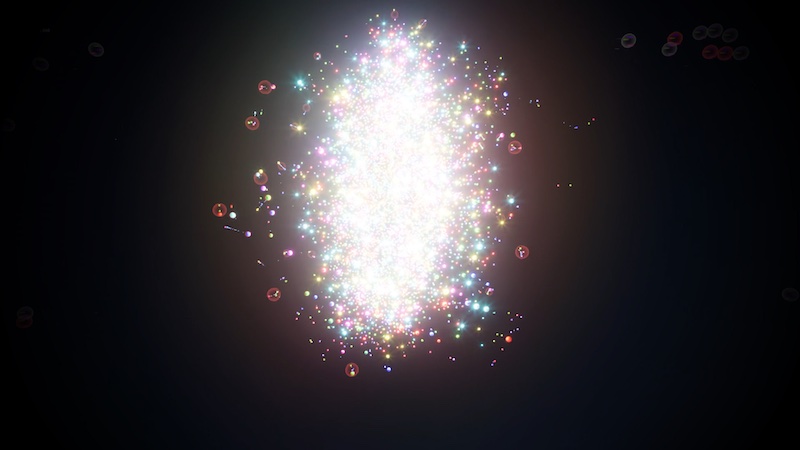
This summer, the Large Hadron Collider (LHC) embarked on a groundbreaking experiment that could unravel mysteries of the early universe. Traditionally filled with beams of protons, the 27-kilometer ring was reconfigured to facilitate its first-ever oxygen–oxygen and neon–neon collisions. The initial results from these experiments, conducted over six days by the ALICE, ATLAS, CMS, and LHCb collaborations, were unveiled at the Initial Stages conference in Taipei, Taiwan, from September 7 to 12.
These collisions are not just a scientific curiosity; they are a window into the quark–gluon plasma (QGP), an extreme state of matter that existed in the universe’s first microseconds before atoms formed. Until now, the exploration of this hot and dense state at the LHC relied primarily on collisions between heavy ions such as lead or xenon, which maximize the size of the plasma droplet created. However, the new focus on lighter ions like oxygen opens a novel avenue for understanding the QGP’s characteristics and evolution.
Unveiling the Quark–Gluon Plasma
Collisions involving lighter ions, such as oxygen, offer a unique perspective on the QGP. These ions are not only smaller than lead or xenon, allowing researchers to probe the minimum size of nuclei needed to create the QGP, but they also have less regular shapes. For instance, a neon nucleus is predicted to be elongated like a bowling pin—a hypothesis that has gained clarity with the new LHC results.
The experiments concentrated on observing subtle patterns in the angles and directions of particles as the QGP droplet expands and cools. These patterns, known as “flow,” are caused by small distortions in the original collision zone. Remarkably, these flow patterns can be described using fluid-dynamics calculations, similar to those used for everyday fluids. This allows researchers to investigate both the properties of the QGP and the geometry of the colliding nuclei.
“Taken together, these results bring fresh perspectives on nuclear structure and how matter emerged after the Big Bang,” says CERN Director for Research and Computing Joachim Mnich.
Comparative Insights and Model Predictions
ALICE, a specialist in QGP studies, alongside the general-purpose experiments ATLAS and CMS, have measured significant elliptic and triangular flow in oxygen–oxygen and neon–neon collisions. These measurements indicate a strong dependence on whether the collisions are glancing or head-on. The level of agreement between theoretical predictions and experimental data is comparable to that obtained from collisions of heavier xenon and lead ions, despite the much smaller system size. This provides compelling evidence that the flow in these lighter collisions is driven by nuclear geometry, supporting the bowling-pin structure of the neon nucleus and demonstrating that hydrodynamic flow emerges robustly across collision systems at the LHC.
Meanwhile, complementary findings presented by the LHCb collaboration further confirm the bowling-pin shape of the neon nucleus. These results are based on lead–argon and lead–neon collisions in a fixed-target configuration, using data recorded in 2024 with the SMOG apparatus. The LHCb collaboration has also begun analyzing the oxygen–oxygen and neon–neon collision data, contributing to the growing body of evidence.
Implications for Understanding the Universe
The implications of these findings are profound. By providing fresh insights into nuclear structure and the fundamental forces at play in the universe’s infancy, these experiments could reshape our understanding of how matter emerged after the Big Bang. The ability to accurately model and predict the flow in these lighter ion collisions enhances our comprehension of the QGP and its role in the early universe.
As researchers continue to analyze the data, the potential for new discoveries remains vast. These experiments not only deepen our understanding of the universe’s earliest moments but also pave the way for future explorations into the fundamental nature of matter.
The Large Hadron Collider’s innovative approach to studying the quark–gluon plasma through shape-shifting collisions marks a significant step forward in particle physics. As scientists delve deeper into these findings, the secrets of the early universe may soon become clearer, offering a glimpse into the very fabric of existence.






